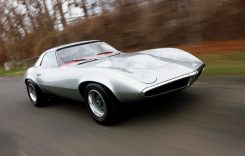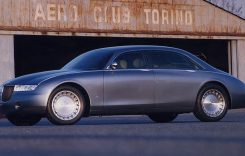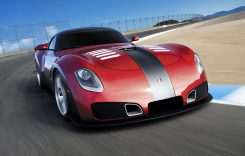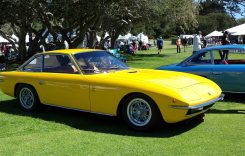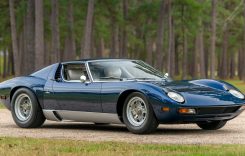The suspension components these bike offer are proven units. The Ducati features a fully-adjustable, inverted 43mm Showa fork and an adjustable Sachs rear shock. The Buell also uses a fully-adjustable inverted Showa fork as well as a fully adjustable Showa shock. The XB9S’s innovative front brake is no doubt cool, but it is not without fault. It has plenty of power, but under heavy braking heading into a corner, the front end exhibits some twist from the forces being applied to only the right side of the front wheel. This effect is negligible around town or under normal riding conditions, but these bike were designed to lay waste to every curvy road between home and mountain top café. So this unnerving phenomenon has to go under the complaint department. The Ducati brakes, in comparison, are excellent no matter what you are doing. Slowing the Monster down takes little in the way of effort, as a light tug on the lever brings smooth powerful stopping power from the four-piston Brembo calipers and dual 320mm rotors.

One area the Buell still needs work is in the motor department. The tuned-for-torque philosophy of the H-D powered Lightning comes up a bit short when compared back-to-back with a motor like the new engine in the Monster. First impression of the power delivery of the two bikes power left us feeling the Ducati was twice as strong as the Lightning, but the dyno showed it was not as bad as it seems. The gearing of the Ducati is much taller than the Buell, so the bike was able to run to higher speeds as you shift through the six gears. The Buell, with its 5-speed gearbox, and low-revving powerplant, runs out of oomph quickly in comparison.
The Hansen’s dyno reveals that these bikes make plenty of torque but the Ducati has a clear advantage in the motor department.
The 984cc air-cooled 45-degree V-Twin Buell motor has a 88.9 x 79 .4mm bore and stroke and similar 10:1 compression ratio with fuel being supplied by a F.I unit with a 45mm throttle body that combines to make 73.7 peak horsepower right before it signs-off at 7400 rpm. The Ducati matches pace on the dyno with about a four-horsepower advantage until 5500 rpm, but then the Ducati starts to flex its Desmo muscle. From 5500 on up to 8000rpm where it peaks out at 85.4 hp, the Ducati really puts the hurt on the Lightning. Looking at the torque curve you can see that the Lightning is down about four ft.-lbs. as both bikes begin to make power. The Buell maxes out at 58.1 hp at 5400 rpm while the Ducati continues to gain momentum, peaking 1000 rpm later at 63.6 ft.-lbs.
Although this certainly dispels any of our thoughts about the Ducati being twice as powerful, it does make sense as the Lightning gives up 2000 rpm to the Ducati’s longer rev range. This gives a rider the sensation that the Ducati is just building up momentum just as the Buells signs off. No matter how you look at it, the new Ducati motor stomps the Buell. But there is more to consider than just pure power. For instance how are the clutch and transmission?
Funny you should ask because the difference between the two is worth noting. The 6-speed Ducati transmission is smooth and precise. The hydraulic clutch lever needs only a two finger tug to engage and a light tap of your foot moves the tranny into the next gear without much conflict. If every clutch and transmission were as excellent as the Monster’s we would have a few less concerns to voice during these tests.
Despite the higher price tag the Ducati is the better all-around bike of these two machines.
The 5-speed Buell transmission and clutch could take a few notes from the Italians. Popeye is the only man we know with the sufficient forearms to disengage the XB9S’s clutch. While riding and commuting on the Buell, we often found ourselves upshifting without the clutch because it was such a bear to use. The transmission is also as cantankerous as the clutch, requiring a mighty nudge in order to engage what is actually an improved H-D transmission. It baffles me that the American-made machine is so mechanical in comparison to the competition. Come on, guys, the V-Rod transmission was nice, so why can’t the rest of them be that way too?
Speaking of V-Rods, wouldn’t it seem like the logical next step to stuff that bad-ass motor in this fine chassis? Of course it would require placement of a radiator and a few more degrees of rake wouldn’t hurt much either. Perhaps a larger motor would suffice, hint, hint.
Although the Buell has an $1100 price advantage over the Duc, these bikes compete for your dollars on the sales floor. The consensus of the Motorcycle USA test crew says the Ducati is the better bike, hands-down. But I didn’t see it was that clear cut.
I thought the innovations on the Buell were plenty of reason to choose that over the Ducati. Besides that, it looks so cool. Everywhere we went people approached the Buell first. Always wanting to know if it was faster than the Duc, what it was and so on. It’s the same thing that happens when you ride a V-Rod with a pack of regular cruisers. It stands out clearly as the unique machine. I, for one, would be hard pressed to fork out the $11,095 MSRP for the Monster 1000S i.e. as opposed to the $9,995 price tag for the Lightning XB9S.

Objectively, though, the Ducati is the better of these two bikes. It was more comfortable according for the majority of our riders and had the performance numbers to back up the street-fighter look. It’s easier to ride and inspires more confidence in all the situations we put it through.
But if someone walked up and said “Hey buddy, you can have either of these bikes for free right now – which one do you want?” I would take the Buell and deal with the grief I would get around the office for choosing the quirky and underpowered machine. The Buell does everything the Duc did, it just did it a different way.
